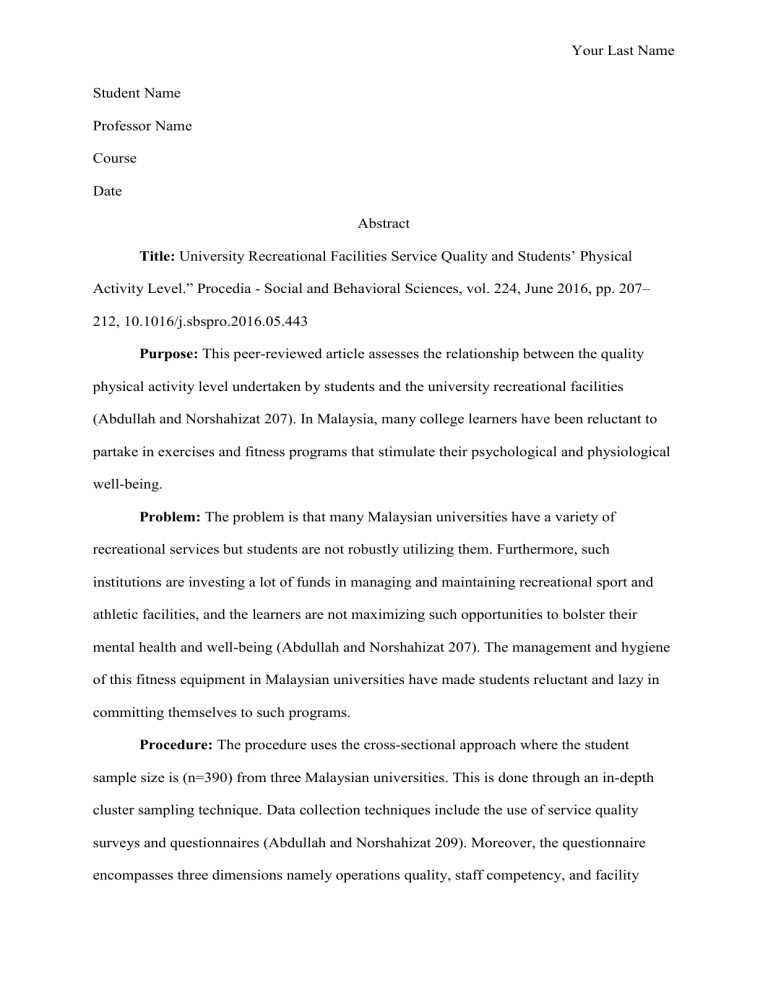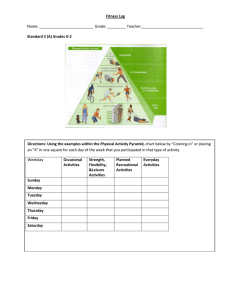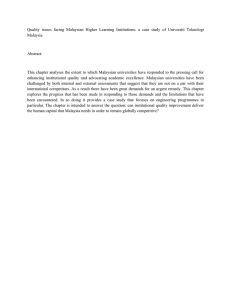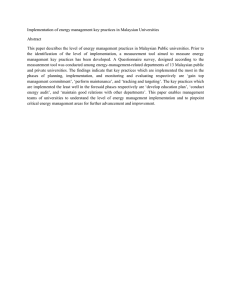
Your Last Name Student Name Professor Name Course Date Abstract Title: University Recreational Facilities Service Quality and Students’ Physical Activity Level.” Procedia - Social and Behavioral Sciences, vol. 224, June 2016, pp. 207– 212, 10.1016/j.sbspro.2016.05.443 Purpose: This peer-reviewed article assesses the relationship between the quality physical activity level undertaken by students and the university recreational facilities (Abdullah and Norshahizat 207). In Malaysia, many college learners have been reluctant to partake in exercises and fitness programs that stimulate their psychological and physiological well-being. Problem: The problem is that many Malaysian universities have a variety of recreational services but students are not robustly utilizing them. Furthermore, such institutions are investing a lot of funds in managing and maintaining recreational sport and athletic facilities, and the learners are not maximizing such opportunities to bolster their mental health and well-being (Abdullah and Norshahizat 207). The management and hygiene of this fitness equipment in Malaysian universities have made students reluctant and lazy in committing themselves to such programs. Procedure: The procedure uses the cross-sectional approach where the student sample size is (n=390) from three Malaysian universities. This is done through an in-depth cluster sampling technique. Data collection techniques include the use of service quality surveys and questionnaires (Abdullah and Norshahizat 209). Moreover, the questionnaire encompasses three dimensions namely operations quality, staff competency, and facility Your Last Name ambiance. Furthermore, the measurement will include the utilization of the Likert scale and the metabolic equivalent of task (MET-minutes). Statistical Package for social sciences (SPSS) is used to analyze the data. Results: Under the three dimensions, the respondents say that the three Malaysian universities do not have excellent fitness equipment. Moreover, the students posit that operations quality makes them abstain from undertaking the finesses process at the university (Abdullah and Norshahizat 211). Half of the university students engage in low physical activity programs. Conclusion: The study claims that there is no positive correlation existing between student’s physical activity and the university's recreational facilities. Therefore, the management of teams and quality fitness equipment should be adopted by all higher learning institutions. Works Cited Abdullah, Norazlin, and Norshahizat Mohamad. “University Recreational Facilities Service Quality and Students’ Physical Activity Level.” Procedia - Social and Behavioral Sciences, vol. 224, June 2016, pp. 207–212, 10.1016/j.sbspro.2016.05.443.



